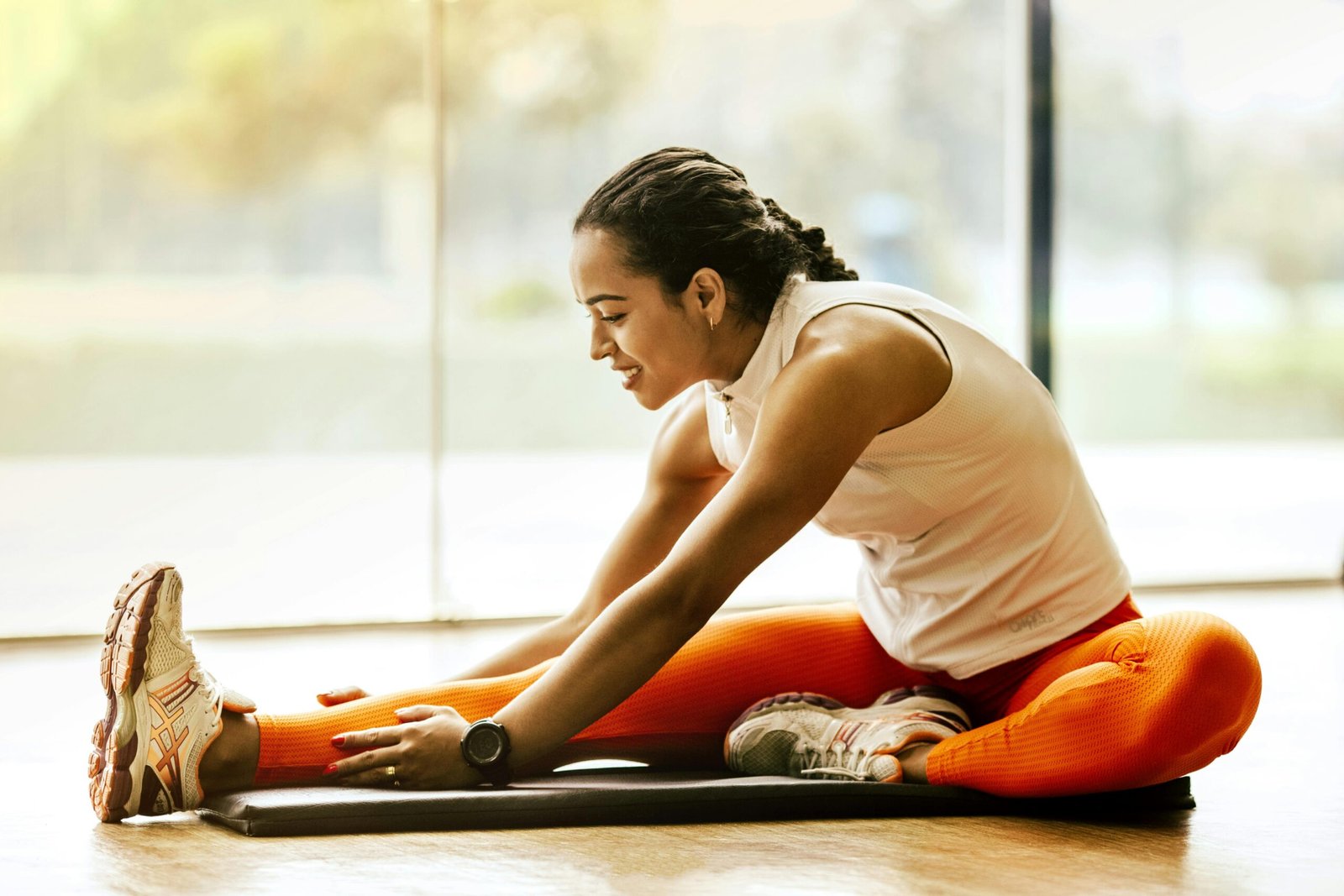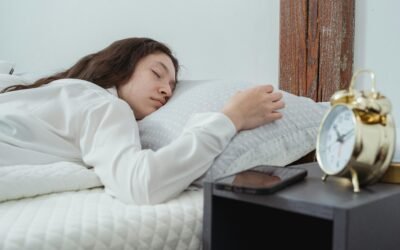If you have ever dealt with hormonal acne and felt like you were doing all the right things with food and skincare but still breaking out, you are not alone. I have been there too. I have always been someone who exercised in some way, but for a long time I was not consistent or intentional with my exercise. I’d go to the gym five times one week, zero the next. I’d start running for three weeks and then I’d drop off and do something else. That all changed about two years ago when I finally committed to regular movement. And honestly, it has changed my life (and skin) for the better, and I now exercise regularly because I enjoy it (and the benefits).
So if you are wondering whether exercise can help clear hormonal acne, especially in the context of Polycystic Ovarian Syndrome (PCOS) related acne, the answer is yes. Here’s why exercise needs to be a part of your skincare routine.
What Causes Hormonal Acne?
Hormonal acne is usually linked to fluctuations or imbalances with testosterone specifically (however, other hormones can be off balance that worsen acne, too). For many people with PCOS, one of the biggest drivers of high testosterone levels is insulin resistance. In fact, around 70 percent of women with PCOS are thought to have some degree of insulin resistance or hyperinsulinemia. There used to be a belief that you’ll only have insulin resistance if you’re overweight or diabetic, but this can happen in women who are a normal weight and don’t have diabetes either.
Insulin is the hormone that helps glucose get into your cells. Glucose is the energy our cells need to function properly. When your body becomes less sensitive to insulin, meaning that glucose doesn’t get inside the cell as easy, so the body has to produce more and more insulin of it to get the same job done. That extra insulin stimulates the production of androgens like testosterone. And too much testosterone can trigger breakouts because it increases oil production in the skin.
Insulin and another hormone called IGF-1 can affect the way your skin naturally sheds dead cells. In healthy skin, our skin cells should be made at the base of the skin, and as they get older move to the outer layer and eventually shed off. But instead of skin cells naturally shedding away like they should, they stick together and clog pores. And if you combine that with excess oil production (which insulin, IGF-1 & testosterone can trigger) plus a bacterial imbalance on the skin, you’ve got the perfect combination for acne.
So Does Exercise Help Clear Hormonal Acne?
It should help, yes. And here are the benefits:
It Supports Insulin Sensitivity
One of the best things about regular movement is that it makes your body more sensitive to insulin. This means you need less insulin to move glucose into your cells. When insulin levels come down, so does the excess testosterone. That can help reduce oil production, support healthier skin cell turnover and bring hormonal acne under control.
This is one of the reasons why exercise is such a helpful tool for managing PCOS. And, you do not have to train like an athlete to benefit. Even gentle movement like daily walking can make a big difference over time, the key is to just be consistent with it to see the benefits.
It Helps Reduce Stress
You might already know that stress can be a big trigger for acne (in fact, you might have experienced a skin flare up during times of stress). Short-term stress doesn’t usually cause issues, but when we’re constantly stressed for weeks, months (maybe even years!) your body starts to react negatively to stress. Long-term stress can affect your blood glucose control, nutrient levels, sex hormones (like testosterone and oestrogen), gut health and more.
Exercise helps regulate your nervous system and bring those stress levels down. It boosts feel-good chemicals that help to support our mood, confidence and self-esteem. This is actually a huge benefit I saw after being regular with exercise, I felt more productive at work and my anxiety had really reduced. And when stress comes down, your hormones and skin tend to follow.
That said, if you are already feeling overwhelmed or burnt out intense workouts might not be the answer. This was something I had to learn the hard way. (More about that later on)
It Helps With Digestion and Bowel Movements
This one might surprise you but your skin, hormones and gut are closely connected. After your body uses hormones like oestrogen it needs to get rid of them. This happens through the liver and then the body pushes out the excess oestrogen through your bowels (hence why you need to go to the toilet regularly!).
If you are not having regular bowel movements at least once a day those hormones can get reabsorbed back into your bloodstream. This can cause imbalances and increase inflammation which can show up in your skin. Not only that, but it maybe contribute to other hormonal symptoms when you’re due on, low swollen or tender breasts, painful periods and other PMS symptoms.
Exercise supports digestion and helps keep everything moving, and you might even notice if you get into a habit of exercising in the morning, that a morning poop happens shortly after. Even though it might sound unrelated keeping your gut moving can absolutely help with hormonal acne.
It Encourages Other Healthy Habits
Exercise is what psychologists call a keystone habit. That means it often leads to other healthy behaviours without you even thinking about it.
When you start moving more regularly you might notice you also drink more water, feel motivated to eat better meals, reduce your alcohol intake, go to bed earlier, or manage stress in a healthier way. These little shifts create a ripple effect that supports your hormones and your skin.
For me regular movement became a non-negotiable for me. It gave me structure to my day. Even now I wake up in the morning and think ‘god I don’t want to get up and exercise’. But I force myself to get out of bed and do it. And you know what? Even on the days when I feel really rubbish, 10 minutes into that workout I feel my brain, body and energy pick up, which then benefits my whole day. Before I committed to exercising in the morning, I’d wake up as late, skip breakfast and just start my whole day stressed and rushing around.
How Much Exercise Should You Do for Hormonal Acne?
If you are asking how much exercise helps with hormonal acne or PCOS the NHS recommends that adults aim for at least 150 minutes of moderate intensity activity per week or 75 minutes of vigorous activity. That is the basic minimum for general health.
Moderate activity includes things like brisk walking, cycling, light swimming or a yoga session. You should feel like you are working out but still able to hold a conversation with a friend.
But for women with PCOS some research suggests aiming for around 250 minutes of moderate intensity activity per week. This works out at about 35 minutes per day, 7 days a week. Or of course, you mix it up and do some 1 hour workouts, alongside some quick walks. You can mix and match whatever works for your lifestyle and energy levels.
If you are already hitting 150 minutes consistently you can explore slowly building up. If you are just getting started begin small and keep it manageable – 10 minute exercise ‘snacks’ are a good way to get into it.
I started with just one Pilates class a week. That was my first step. A few months later I increased to three times a week. Eventually I found my rhythm with five sessions a week and I genuinely looked forward to exercising (most of the time, we all have off days). Whereas in the past I’d get a huge surge of motivation, go to the gym five times a week and feel burnt out by Saturday and have a week off. Not sustainable!
Your hormones love consistency more than they love intensity. Doing intense workouts 5 days a week, for one week, and then having a 2 week break isn’t what your body needs (I know because I did that previously for YEARS).
Can Exercise Make Acne Worse?
Sometimes, yes. Here are a few situations where exercise might not be helping your skin.
Overtraining or Underfuelling
If you are working out a lot but not eating enough or recovering properly, it can raise your stress hormones and disrupt your cycle. Especially if you are doing fasted workouts or running on coffee alone. Your body needs fuel to feel safe.
Try to eat a balanced meal or snack with protein and complex carbs before or after your workouts. Even if it’s just something small to start with. Make sure you are giving your body enough rest as well as movement. Rest is productive and essential for healing your skin, even though it won’t feel like it if you’re used to constantly ‘doing’.
Not Cleansing After Sweating
If you’ve done a sweaty workout, bacteria and oils can build up on the skin, which might increase the risk of breakouts. Especially if you’re staying in your clothes for a bit afterwards. Polyester gym clothes can really encourage the buildup of bacteria as they absorb oils and sweat from the body (which is why it smells after working out). So if you are wearing these, try and have a quick shower after exercising.
If you cannot shower right away a quick spray of hypochlorous acid spray can help protect the skin barrier and keep breakouts at bay.
too much high intensity
If your nervous system is already on edge pushing through high intensity workouts or long cardio sessions might raise cortisol even more. Sometimes your body actually responds better to gentler movement like yoga walking or Pilates.
And I get it. If you love HIIT workouts you might be thinking, you’re telling me to give up my exercise?!
Trust me I felt the same. I used to love HIIT and thought I had to go all out to see results. But over time I realised that sometimes our bodies need less pressure and more support, especially as women because our hormone fluctuations affect our performance across the month.
When I swapped the constant intense sessions for things like Pilates and walking not only did my skin start to calm down but I felt more energised. And just to be clear, Pilates is not easy – even though it might seem like it is compared to a HITT session.
I actually got into the best shape I have ever been in through consistent lower intensity exercise.
So if you are feeling stressed, fatigued or just a bit ‘meh’, it might be good to rethink your movement routine. And I’m not saying never do high intensity, you absolutely can. But do we need to be doing it 5 times a week, every week of the month? Probably not. I would recommend starting with lower intensity workouts the week before your period, and when you’re on your period. You will not lose progress by taking a more mindful approach. In fact your hormones might thank you for it.
What Is the Best Exercise for Hormonal Acne?
The best exercise for hormonal acne is the one that:
- Supports your body
- Helps manage stress
- Fits into your lifestyle consistently
Also, you don’t have to go to a gym. Movement can be anything you enjoy, like swimming, dancing, ice-skating, hiking, playing a sport. You’re more likely to be consistent with some kind of movement that you enjoy.
There’s not a ‘best form of exercise’ for acne or PCOS. It’s honestly whatever works for you and makes you feel good.
So Can Exercise Help Clear Hormonal Acne?
Yes it can! Am I saying that exercise alone will magically clear up your skin, no. But, it does help to work on a lot of the underlying issues with hormonal acne.
Exercise will not replace a personalised nutrition plan, skincare routine or medical support that you might need to help gain control of hormonal acne. But it can be a powerful tool in your healing journey. When it is done mindfully and consistently it supports your hormones, gut, brain, energy, mood and skin in a really holistic way.
And remember – the minium amount of exercise is 150 minutes of moderate activity per week. So aim for that, and increase from there!





0 Comments